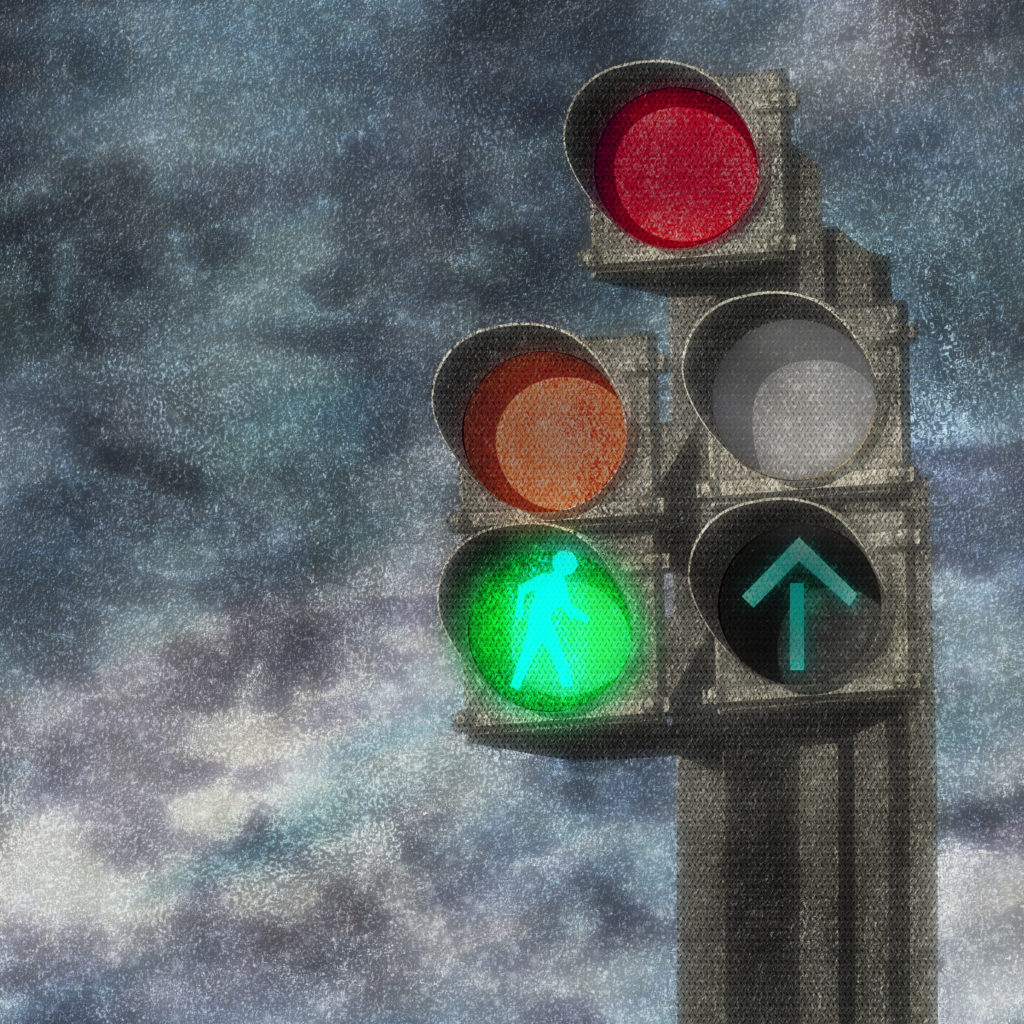I do not completely subscribe to color theory (red = passion, green = nature, blue = tranquility, etc.). However, interpretations of colors and what they represent can help you explore the use of color in your film.
In my film, “Detour,” I used the colors of a traffic light to reflect the main characters through wardrobe and props. Jackson Alder’s life is transformed when he’s trapped inside a car during a mudslide. His day started on his planned route, but only until he’s pushed off it does his real journey begin. Jackson’s girlfriend, Laurie, is coded with green: the color of nature, freedom, permission, and “go” in a traffic light. Jackson’s unborn baby is red, the color of passion, fire, blood; also the color of “stop” in a traffic light. It is what he feels is “stopping” him from living his life. He is caught between both of these colors, caught between Laurie and his child. He is yellow: the color of the sun, the sun which has become nonexistent in his predicament, the sun that only exists through memories—memories that seem so distant, no road could possibly lead back to them.
- Yellow is also the primary color that stimulates mental activity, which is Jackson’s forte as an advertising executive.
- Yellow is the first color the eye recognizes against black, and black is the principal color of the mud that presses up against Jackson’s car windows, which threatens to crush him.
- Yellow is the color of caution in a traffic light, and Jackson lives a life of caution.
I recommend that you work closely with your costume designer to incorporate color motifs into the actors’ wardrobes. Color not only helps depict character, as it did in “Detour,” but it is also an important conveyor of mood.
William Dickerson is an award-winning filmmaker and author. His debut feature film, “Detour” was hailed as an “Underground Hit” by The Village Voice, an “emotional and psychological roller-coaster ride” by The Examiner, and nothing short of “authentic” by The New York Times. He wrote the book, “DETOUR: Hollywood – How To Direct a Microbudget Film (or any film, for that matter).”
is an award-winning filmmaker and author. His debut feature film, “Detour” was hailed as an “Underground Hit” by The Village Voice, an “emotional and psychological roller-coaster ride” by The Examiner, and nothing short of “authentic” by The New York Times. He wrote the book, “DETOUR: Hollywood – How To Direct a Microbudget Film (or any film, for that matter).”



